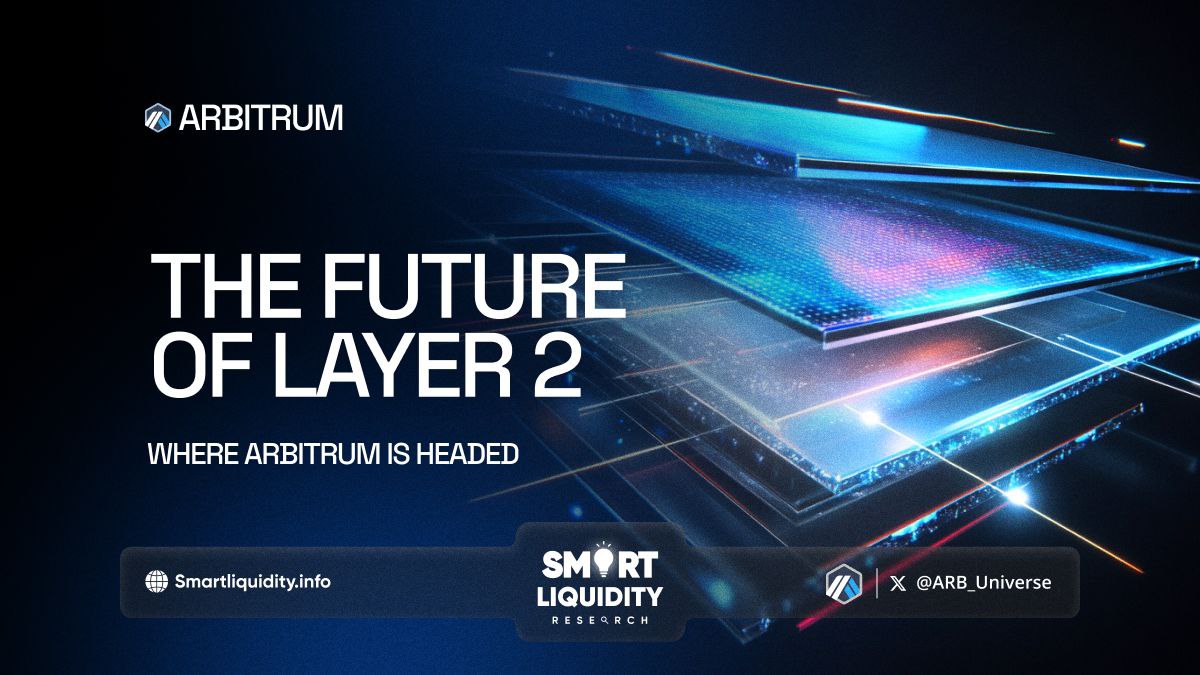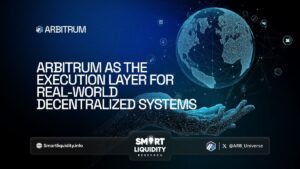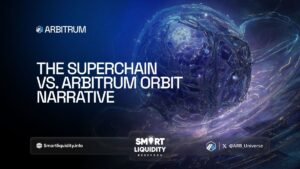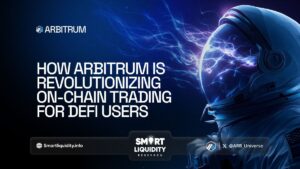The Future of Layer 2: Where Arbitrum is Headed


The Future of Layer 2: Where Arbitrum is Headed! As the demand for efficient, scalable blockchain solutions grows, Layer 2 (L2) technologies are playing an increasingly vital role. Among these, Arbitrum stands out as a leading solution, pushing the boundaries of Ethereum’s scaling capabilities.
As blockchain technology evolves, the need for efficient, scalable solutions becomes more pressing. Ethereum, one of the most popular blockchains, has faced significant congestion and high transaction fees due to its popularity. This is where Layer 2 (L2) solutions like Arbitrum offer innovative ways to alleviate these issues while enhancing scalability and usability. This article dives into what makes Arbitrum a leading L2 solution, its current impact, and its direction.
1. Understanding Arbitrum and Its Role in Layer 2 Scaling
Arbitrum is a Layer 2 scaling solution designed to improve the transaction speed and cost-effectiveness of the Ethereum network. Built on the principle of Optimistic Rollups, Arbitrum allows transactions to be processed on a secondary layer, off the Ethereum mainnet, while still maintaining the security of the main Ethereum chain. This means that users can enjoy faster transactions at a fraction of the usual fees, without compromising on security.
Key Features of Arbitrum:
- Scalability
Arbitrum significantly increases transaction throughput by processing transactions off-chain, thereby reducing network congestion on Ethereum. - Lower Gas Fees
By moving computations off the main chain, users experience reduced transaction fees. - Ethereum Compatibility
Arbitrum is fully compatible with the Ethereum Virtual Machine (EVM), meaning developers can easily deploy their existing Ethereum-based applications on Arbitrum with minimal modifications.
These features make Arbitrum an attractive solution for decentralized applications (dApps), decentralized finance (DeFi) projects, and NFT marketplaces that rely on Ethereum but require greater efficiency and lower costs.
2. The Layer 2 Landscape and Arbitrum’s Position
As Ethereum’s popularity grows, so does the demand for Layer 2 solutions to handle its scaling challenges. Arbitrum, along with other L2 projects like Polygon and Optimism, aims to support Ethereum by reducing congestion and transaction fees. However, each Layer 2 solution takes a slightly different approach:
- Polygon
Uses various scaling techniques like sidechains, which require a certain level of decentralization but can offer very low fees. - Optimism: Similar to Arbitrum, Optimism uses Optimistic Rollups but differs in its technical design and incentives.
Arbitrum stands out for its high level of Ethereum compatibility and security-focused approach, giving it a competitive edge in the growing L2 market.
3. Arbitrum’s Current Success and Adoption
Since its launch, Arbitrum has seen rapid adoption by dApps, DeFi protocols, and various blockchain projects. Here are some of the highlights of its impact so far:
- High Total Value Locked (TVL)
Arbitrum has attracted billions in TVL from DeFi projects, a key indicator of the trust and interest it has generated among users and developers. - Expanding Ecosystem
Major DeFi protocols, such as Uniswap and Aave, have deployed on Arbitrum to provide users with the benefits of lower fees and faster transactions. - Developer Interest
Thanks to its EVM compatibility, Arbitrum is a popular choice for Ethereum developers looking for scalable solutions. Many developers have migrated or built on Arbitrum because they can leverage their existing Ethereum code with minimal changes.
Arbitrum’s adoption is a clear signal of its success and potential in the Layer 2 space.
4. Where Arbitrum is Headed
Arbitrum’s development roadmap is packed with exciting updates and improvements that promise to strengthen its position as a leading Layer 2 solution. Here are some anticipated developments:
- Increased Decentralization
Arbitrum aims to further decentralize its network, giving users and validators more control. This step is crucial to maintaining the trust and integrity of the network as it scales. - Scalability Upgrades
With a commitment to continuous improvement, Arbitrum is exploring ways to further reduce transaction fees and increase processing speeds. Future upgrades are expected to enhance throughput and lower fees, bringing it closer to mass adoption. - Enhanced Developer Tools
By refining its developer toolkit, Arbitrum is making it easier for developers to build and deploy dApps. The goal is to create a seamless experience for developers and further promote growth within the Arbitrum ecosystem. - New Partnerships
Arbitrum is likely to expand its partnerships with key projects and companies in the blockchain and crypto industries, solidifying its role as a foundational Layer 2 solution. - User Experience Improvements
Arbitrum is focused on improving the end-user experience by making transactions even smoother and faster. This focus on usability aims to attract both crypto enthusiasts and newcomers.
These developments will not only make Arbitrum more robust but also pave the way for more complex and high-performance dApps on the Ethereum network.
5. The Future of Layer 2 and Arbitrum’s Role
Layer 2 solutions are essential to the future of blockchain technology. As Ethereum continues to evolve with upgrades like Ethereum 2.0, Layer 2 solutions like Arbitrum will play a crucial role in accommodating growth and expanding blockchain use cases. Here’s why Arbitrum is well-positioned for the future:
- Complementing Ethereum’s Roadmap
Arbitrum’s scaling approach aligns with Ethereum’s broader vision. As Ethereum transitions to proof-of-stake and improves data availability, Arbitrum will likely integrate seamlessly with these advancements. - Driving DeFi and Web3 Growth
With lower fees and faster transactions, Arbitrum can unlock the full potential of decentralized finance and Web3 applications, making them more accessible to users worldwide. - Fostering Innovation
By providing a scalable infrastructure, Arbitrum encourages the development of innovative applications, such as complex financial derivatives, gaming dApps, and metaverse projects that require high performance.
Synopsis
Arbitrum has emerged as a transformative force in the Layer 2 space, offering scalable, secure, and cost-effective solutions to Ethereum’s congestion challenges. As it continues to improve decentralization, scalability, and user experience, Arbitrum is well-positioned to lead the charge in the future of Layer 2 solutions. With promising updates on the horizon, Arbitrum stands ready to support the next wave of dApp innovation, DeFi expansion, and mainstream blockchain adoption.




